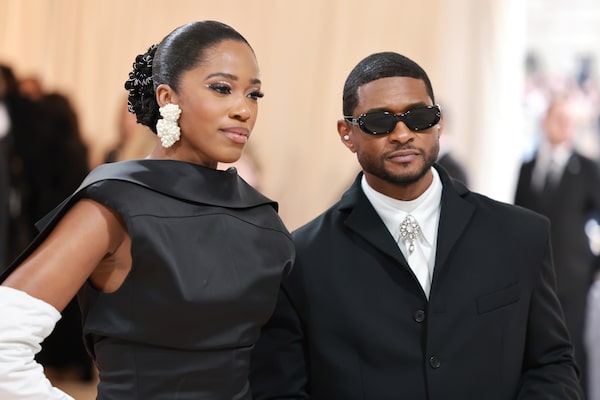
Bianca Saunders and Usher attend the 2023 Met Gala, in New York City, on May 1, 2023.Theo Wargo/Getty Images
Days before the TIFF premiere of Swan Song, the film he executive produced, Sean O’Neill had an outfit crisis: He suddenly hated what he had planned to wear. “I just want to feel like myself when I’m gonna have to step in front of 2,000 people,” he tells me. Desperate for sartorial guidance, he made a last-minute pilgrimage to 100% Silk in Toronto’s Junction Triangle, an emporium for handmade, textile-forward fashion.
With the staff’s help, O’Neill found a fit he was comfortable in, a contemporary update on a classic suit made from a Tencel-cotton blend in a rich dark green colour. The suit was designed by Maryam Nassir Zadeh, a cult indie brand out of New York. The blazer was cut loose and featured a stand collar instead of a traditional lapel and offset shoulder pads for an easy shape. The trousers were pleated, straight-leg cargo pants with two deep pockets on the knees. “You’re kind of playing with a traditionally masculine silhouette, but it’s off somehow,” says O’Neill of the suit he wore on to the premiere. “It’s looser, and the fabric has a flow and a movement to it.”
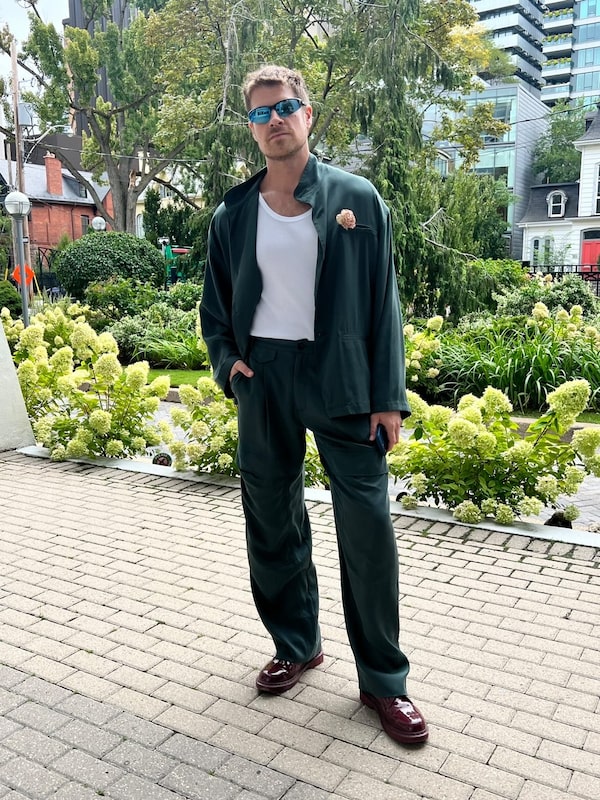
Sean O’Neill in a suit designed by Maryam Nassir Zadeh.Handout
There are scarcely any women designers in top creative jobs in luxury fashion (especially in women’s wear, the industry’s economic driver). At LVMH, the world’s largest luxury conglomerate, only two of the 14 brands in the fashion division, Dior and Pucci, have women creative directors. (LVMH has stakes in Stella McCartney and Phoebe Philo, but they’re run independently.) All of the creative directors at LVMH’s competitor Kering, which owns Bottega Veneta and Balenciaga, are white men.
Forget runways, NBA players use game-day tunnels to strut latest styles and score new fans
But Maryam Nassir Zadeh is just one in a growing number of smaller, independent designers making men’s wear, either exclusively or in addition to women’s wear. Also in the same sphere, designers Emily Adams Bode Aujla of Bode, Grace Wales Bonner of Wales Bonner, Martine Rose and Bianca Saunders, to name a few. Bonner, Rose and Saunders are all Black women, at a time when even fewer luxury designers are Black. Bonner and Rose were rumoured to replace Virgil Abloh at Louis Vuitton before Pharrell was named his successor.
Some toy with or even subvert tropes of masculinity and classic men’s style; others propose a sincere, softer vision of the contemporary man. Rose’s asymmetrical sweatsuits and football jerseys nod to working-class subcultures. Saunders’s twisted take on tailoring and sportswear dissects the different facets of Black masculinity. Wales Bonner infuses European luxury with a distinct Afro-Atlantic sensibility. Bode’s delicate, upcycled shirts and embroidered, fringed jackets have inspired a cult of “Bode boys” who worship at the designer’s corduroy altar in dainty opera loafers.
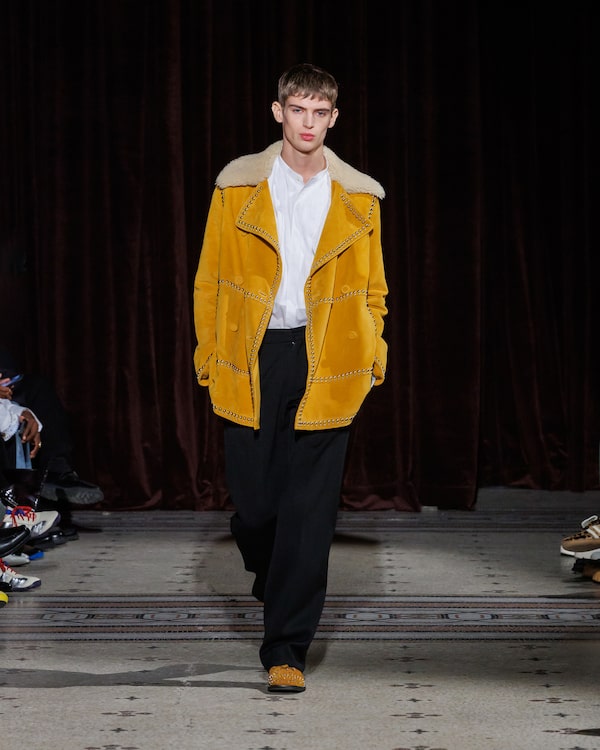
A look from Wales Bonner, fall 2024.Handout
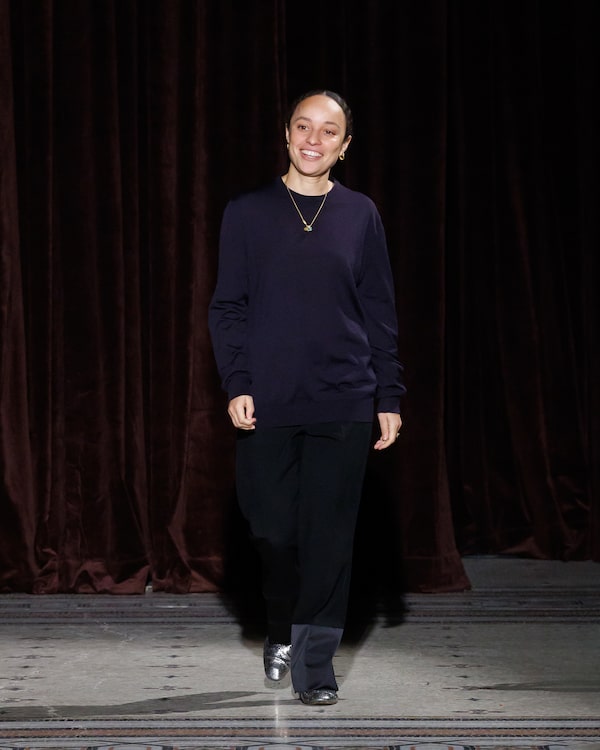
Designer Grace Wales Bonner.Handout
One can’t necessarily discern a designer’s gender from looking at their designs. But a designer’s life and experience inform their work, regardless of who they’re designing for. For women who design men’s clothes, women’s experiences with the men in their lives, and in society and culture, invariably influence their work. Nassir Zadeh said as much to Rachel Tashjian, a fashion writer then at GQ, when she launched men’s wear, of how her relationships with her father, husband and closest collaborator have shaped her collection, which is “imbued with emotion, an openness to the world and a sensual creativity.” (Nassir Zadeh’s protégés, Sophie Andes-Gascon and Claire McKinney, run the New York label SC103. The women also recently introduced men’s wear, a collection of crafty, patchworked, uncategorizable pieces.)
Gender alone cannot inform a designer’s work – nor should it. There may be nothing mystically exceptional about a woman designing men’s fashion, or vice versa. Women Dressing Women, an exhibition at the Metropolitan Museum of Art’s Costume Institute in New York, spotlights the work of female women’s wear designers throughout history, such as Claire McCardell and Rei Kawakubo, the founder of Comme des Garçons. Tashjian, in The Washington Post, says the exhibitions’ curators “seem to know that stating what makes a female designer unique is impossible and, more importantly, reductive.” The exhibition offers a deeper insight, “that the stories behind what they put on their bodies are much richer than they might assume.”
With women-designed men’s wear, there’s a tension that animates the clothes, giving them new life. These tweaks crack the door open slightly wider for guys to experiment a little.
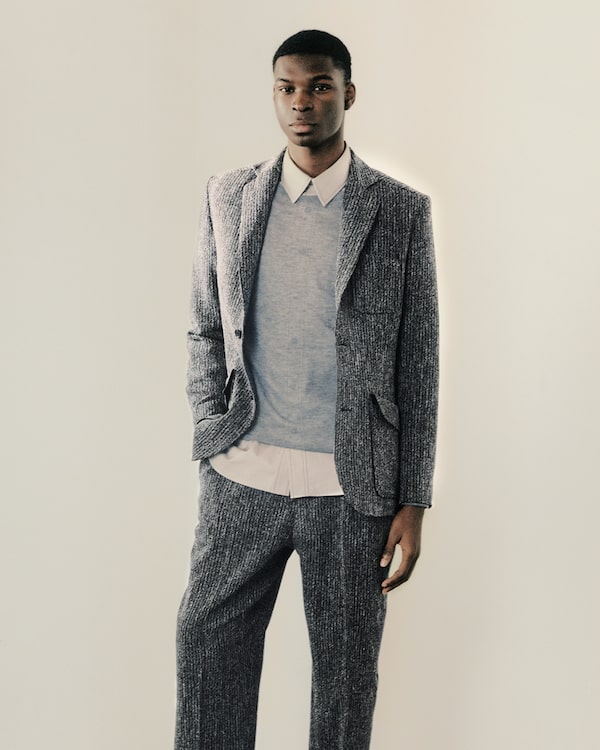
A look from Wanze.Handout
The designer Wanze Song, who runs her brand Wanze in Toronto, approaches designing men’s wear differently than her women’s collections. Song designs her women’s clothes for herself; her men’s offering is what she’d like to see a man wear, outside the bounds of Instagram-prescribed aesthetics such as gorpcore or streetwear. Song’s fluid, triple-pleated trousers and moto zip shirts propose a neat, elevated approach to everyday clothes, one that both requires and exudes confidence to wear.
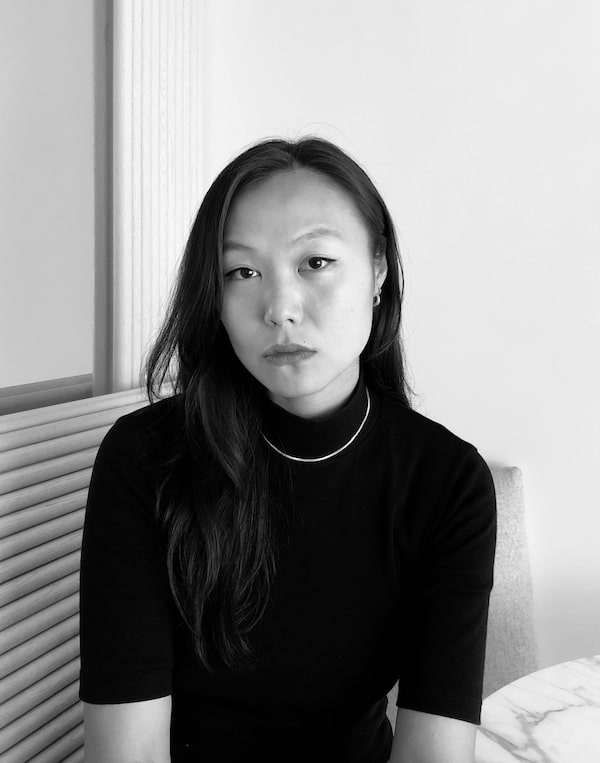
Designer Wanze Song.Handout
Men’s wear is generally “more conservative,” she says, so Song tries to “push for a certain sensibility … a smarter approach.” For example, her recent collection included a smock shirt with a deep V-neck, worn by a model without a shirt underneath. “These are small things,” she says. “You want to push this image, a certain vision” of male confidence, a unique identity.
(Martine Rose expressed a similar sentiment to The Guardian last year. “I like to break the rules,” she said. “And there’s loads of rules of men’s wear.”)
Saager Dilawri notes that “a lot of men’s wear designed by men ends up being more utilitarian or practical.” Dilawri owns Neighbour, an influential Vancouver retailer whose dedicated men’s shop stocks women-designed brands including Margaret Howell, Bode and Canadian newcomer Dana Lee Brown. A brand like Bode, he says, with its lace threadwork shirts, “splits the hairs between your traditional masculine and feminine.”
Then add unexpected details and choices that imbue everyday garments with personality and spirit. Take the overlong sleeves on Nassir Zadeh’s loose-fitting V-neck sweaters and button-ups that dangle past the fingers. In a lesser designer’s hands, this look would have the effect of a guy swiping his dad’s old sweater in a fumbled attempt at “grandpacore,” an internet trend rooted in retro-inspired wares your grandpa might have worn. But from Nassir Zadeh, this subtle element transforms the shape, lending a sensuality and tenderness to an otherwise basic or functional garment.
These brands share little beyond their designers’ gender. Not customers, aesthetics, sensibilities or stockists. They do all, however, pave new avenues for fashion-oriented men to express themselves in novel ways safely without shopping in the women’s section. They also prompt self-reflection. Who am I when I wear these clothes? It’s not always obvious why a designer’s work resonates. The internal search to articulate why can lead to unexpected revelations.
“I don’t even know exactly how to pinpoint what that is,” says O’Neill of the vision of masculinity these brands project. These brands aren’t upholding traditional masculinity, nor are they brazenly subverting it with classically feminine clothes (though some, such as designers Simone Rocha and Molly Goddard, adorn their suits and shirts with pearls and ruffles). Rather, O’Neill says their clothes represent men’s wear “on a slant”: a new angle, a new option. “And it so happens that a lot of those brands are designed by women.”